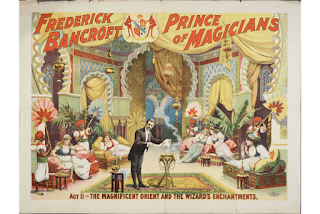Tag: entertainment
Primary Sources: Hollywood, Censorship, and the Motion Picture Production Code, 1927-1968
Formed in 1934, the PCA was an agency of the Motion Picture Producers and Distributors of America (the MPPDA, after 1945, the Motion Picture Association of America) that certified films meeting the standards of the Production Code. Standard practice was for the PCA to review the scripts of the films first, identifying problem areas that had to be addressed prior to shooting the film. Only after seeing the final cut of the film would the PCA’s Code Seal be issued.
Sourced from the Margaret Herrick Library of the Academy of Motion Pictures Arts and Sciences, Hollywood, Censorship, and the Motion Picture Production Code, 1927-1968 is a collection of Production Code Administration (PCA) files that provide insight into this process of preproduction and final review and the negotiations between the PCA and the motion picture studios over details in the films. The files also reflect Hollywood’s growing resistance to the Code after World War II when filmmakers wanted to tackle topics that had been previously discouraged by the PCA, such as anti-Semitism, racism, alcoholism, mental illness and the like.
It wasn’t until 1956, though, that the Production Code underwent a major rewrite and once some restrictions were loosened, others soon followed. What influence the PCA had quickly waned and in 1968 it was formally replaced by the Code and Rating Administration, which did not regulate the movies, but instead provided ratings that would serve as warnings for moviegoers.
These files were originally gathered together as a microfilm collection and do not include the entire PCA collection of the Margaret Herrick Library. Instead, they are a representative sampling of files on 500 films that were selected by the staff of the Library’s Special Collections Department. The files include story and script reviews, interoffice memos, studio correspondence, trade-press clippings, letters from moviegoers, and much more.
Primary Sources: Victorian Popular Culture
During the last year The Library acquired the digital archive Victorian Popular Culture, which consists of four thematic collections.
Spiritualism, Sensation, and Magic “explores the relationship between the popularity of Victorian magic shows and conjuring tricks and the emergence of séances and psychic phenomena in Britain and America. The late nineteenth and early twentieth centuries saw an explosion of interest in the occult, and the foundation of a new religious movement, Spiritualism.”1
Circuses, Sideshows, and Freaks includes rare books, children’s literature, and celebrity memoirs and “focuses on the world of travelling entertainment, which brought spectacle to vast audiences across Britain, America and Europe in the 19th and early 20th century. From big tops to carnivals, fairgrounds and dime museums, it covers the history of popular shows and exhibitions from both audience and professional perspectives.”2
Music Hall, Theatre, and Popular Entertainment covers pantomime, exhibitions, pleasure gardens, and a wide range of other types of public entertainment and spectacles.
Moving Pictures, Optical Entertainments, and the Advent of Cinema covers optical entertainments from the 18th to early 20th century. The collection includes digital clips of original archival footage dating back to 1894.
The documents are categorized as printed material and visual material. All print materials are full-text searchable and visual material and manuscripts are keyword indexed. Search results are sorted by relevance by default, but can be sorted by author, date, and document type, and can be filtered to limit to visual or printed material.
The materials included were sources from multiple archives, including:
- Senate House Library, University of London: The Harry Price Library of Magical Literature
- Senate House Library, University of London: The Malcolm Morley Collection
- Harry Ransom Center, University of Texas at Austin
- National Fairground Archive, University of Sheffield
- Vauxhall Gardens Collection, Lambeth Archives
- The May Moore Duprez Archive
- The British Library
- The Bill Douglas Cinema Museum
- British Film Institute National Archive
1 http://www.victorianpopularculture.amdigital.co.uk/Introduction/NatureAndScope/Spiritualism
2 http://www.victorianpopularculture.amdigital.co.uk/Introduction/NatureAndScope/Circuses
Primary Sources: Media History Digital Library
The Media History Digital Library (MDHL) is a digitized collection of media publications in the public domain, consisting of important trade publications and fan magazines, mostly from the first half of the twentieth century. The publications can be browsed, or searched using Lantern, a tool developed by the MHDL and the University of Wisconsin-Madison Department of Communication Arts. Titles currently included are:
Business Screen (1938-1973)
Cine-Mundial (1916-1946)
Close Up (1927-1933)
The Film Daily (1918-1948)
International Photographer (1929-1941)
Journal of the Society of Motion Picture Engineers (1916-1949)
Journal of the Society of Motion Picture and Television Engineers (1950-1954)
The Educational Screen (1922-1962)
Modern Screen (1930-1960)
Motion Picture [Magazine] (1914-1941)
Motion Picture Daily (1931-1960)
Motion Picture Herald (1931-1948)
Motion Picture News (1913-1930)
Motion Picture News Booking Guide (1922-25)
Moving Picture World (1907-1919)
Photoplay (1914-1940)
Radio Age: Research, Manufacturing, Communications, Broadcasting, Television (1942-1957)
Radio Broadcast (1922-1930)
Screenland (1920-1960)
Sponsor (1946-1964)
Talking Machine World (1906-1928)
Variety (1905-1941)
Learn more from this video
Primary Sources: American Popular Entertainment
The American Popular Entertainment collection from the University of Illinois contains digital facsimiles of historic newspapers and trade journals published for the entertainment industry in the US between 1853 and 1929. These works include trade perspectives, features, and travel information on vaudeville, music performance, burlesque, and other popular forms of entertainment of the period.
The collection currently includes:
New York Clipper 7 May 1853 – 12 July 1924 (3605 issues)
Player 8 December 1911 – 21 November 1913 (102 issues)
Vaudeville News 16 April 1920 – 8 June 1929 (286 issues)




